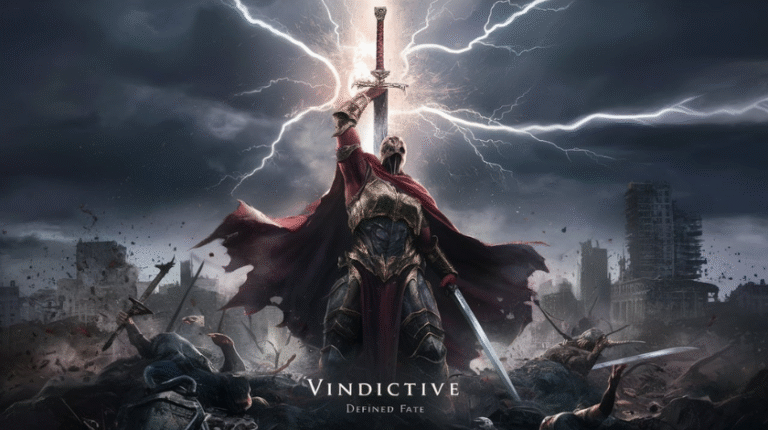In the ever-evolving landscape of digital gaming, few titles have stirred anticipation and mystery like “Vindictice: Defined Fate.” As the game’s development journey unfolds, a new wave of concern has surfaced foreclosures on launch content. This complex scenario is a pressing issue for players, developers, and analysts alike. In this article, we dissect the launch complications, the concept of foreclosure in a game development context, and what the term “defined fate foreclosures” means for the future of this much-anticipated title.
Understanding the Vindictice Universe and Development Roadmap
Vindictice: Defined Fate is a hybrid RPG/MMO title, built on a dark, mythos-infused fantasy engine. Developed by an independent studio leveraging Unreal Engine 5, Vindictice aims to deliver highly cinematic combat, morally complex character arcs, and open-ended story progression influenced by player choices.
The phrase “defined fate” refers to the narrative mechanic in which major plot decisions seal the character’s arc in permanent consequences. It’s this element of finality that makes each playthrough unique but it’s also this rigidity that feeds directly into the issue of foreclosures on launch.
What Are Foreclosures in Game Launch Context?
In the gaming industry, “foreclosures on launch” typically refers to the pre-emptive locking out or cancellation of features, content, or mechanics that were originally planned or even publicly teased prior to release. These foreclosures can be:
-
Technical (unfinished mechanics removed)
-
Narrative (story branches removed or limited)
-
Monetary (content paywalled or turned into post-launch DLC)
When applied to Vindictice, the term “foreclosures” appears to encapsulate a broader issue involving cut content, limited initial playability, and possibly monetized features that were once expected to be part of the base game.
How Defined Fate Mechanic Contributes to Launch Restrictions
The Defined Fate system is a double-edged sword. While it encourages impactful decisions and narrative gravity, it also introduces serious developmental challenges:
-
Branch Overload: Developers must build and test multiple complex outcomes per decision tree, often increasing QA hours tenfold.
-
Inflexible Code Architecture: Once a path is chosen, entire systems are locked from the player, which means bugs in those paths may force other systems into shutdown as well.
-
Resource Constraints: Due to time and budget limits, some “fate branches” may be foreclosed entirely, even if narrative assets are in place.
This results in a launch version that includes only partial story arcs, or arcs that end abruptly with placeholder conclusions, while richer, finished branches may be locked behind future patches or expansions.
Cut Content and Early Access Transparency
Initial early access builds of Vindictice: Defined Fate showcased a wide variety of environments, enemy types, and story arcs many of which are absent from the current build.
Key missing elements include:
-
The Ravenspire Region – Once a major part of the third act, now inaccessible
-
Feral Warden Class – Teased in alpha footage, removed without explanation
-
Soulbind Mechanics – A multi-character fate-sharing feature, now postponed indefinitely
-
Dialogue Reversal – Once promised as a mechanic allowing players to re-explore fate choices through rituals, this has been foreclosed for launch
The lack of transparency surrounding these omissions has fueled community backlash, particularly on forums and Reddit threads where users are compiling detailed comparisons between alpha footage, developer promises, and the actual shipped game.
Why Developers Resort to Content Foreclosure at Launch
Content foreclosure isn’t always the result of bad faith. There are several common causes:
1. Technical Bottlenecks
Engines like Unreal Engine 5 offer advanced capabilities but also bring steep performance costs. Poor optimization can force studios to temporarily remove resource-heavy content.
2. Publisher Pressure
Release windows dictated by publishers often conflict with development readiness. In cases where milestone deliverables are tied to payment schedules, developers must cut content to meet deadlines.
3. Monetization Strategies
Unfortunately, some studios opt to segment major features into DLC or expansions, even if these were initially part of the main experience.
Impact on Player Experience and Trust
The foreclosure of anticipated content directly affects the player’s trust in the development team. This erosion of confidence can damage:
-
User Reviews (especially on Steam and Metacritic)
-
Word-of-Mouth Marketing
-
Post-launch Sales
-
Community Support for DLC or Season Passes
In the case of Vindictice: Defined Fate, player reaction has been mixed, with many praising the game’s core mechanics while voicing strong disappointment over missing content and story arcs left unresolved.
Possible Remedies and Community-Backed Solutions
1. Transparent Content Roadmaps
Players are more forgiving when studios offer detailed post-launch roadmaps that clearly communicate when and how missing content will be reinstated.
2. Free DLC Restoration
Content that was removed or foreclosed should be restored as free DLC, not as paid expansions.
3. Narrative Patching
Developers could use “reconstructed lore drops” to fill narrative holes caused by the Defined Fate content locks.
4. Optional Replay Loops
By allowing players to re-navigate key decisions in a NG+ (New Game Plus) format, the rigidity of fate locks can be mitigated post-launch.
The Future of Vindictice and Post-Foreclosure Recovery
Despite the rough launch state, Vindictice: Defined Fate still possesses strong potential for recovery. With a few strategic updates, transparency, and community engagement, the game can regain momentum and earn back trust.
Planned features that are reportedly in development include:
-
The Fate Rewriter Update – allows limited re-routing of storylines
-
Expanded Enemy AI Behavior Trees
-
Performance Optimization Patch
-
Modding Tools Beta Access for community-driven content fixes
These features, if released within a reasonable timeframe, can address the major points of foreclosure and elevate the game’s standing in the genre.
Conclusion
The phrase “Vindictice Defined Fate foreclosures on launch” reflects a broader tension between creative ambition and practical delivery in modern game development. While the game pushes narrative boundaries with its fate-locking system, its launch has been marred by content foreclosures and communication lapses. Only through decisive updates, community engagement, and transparent recovery strategies can the title fulfill its original promise.

